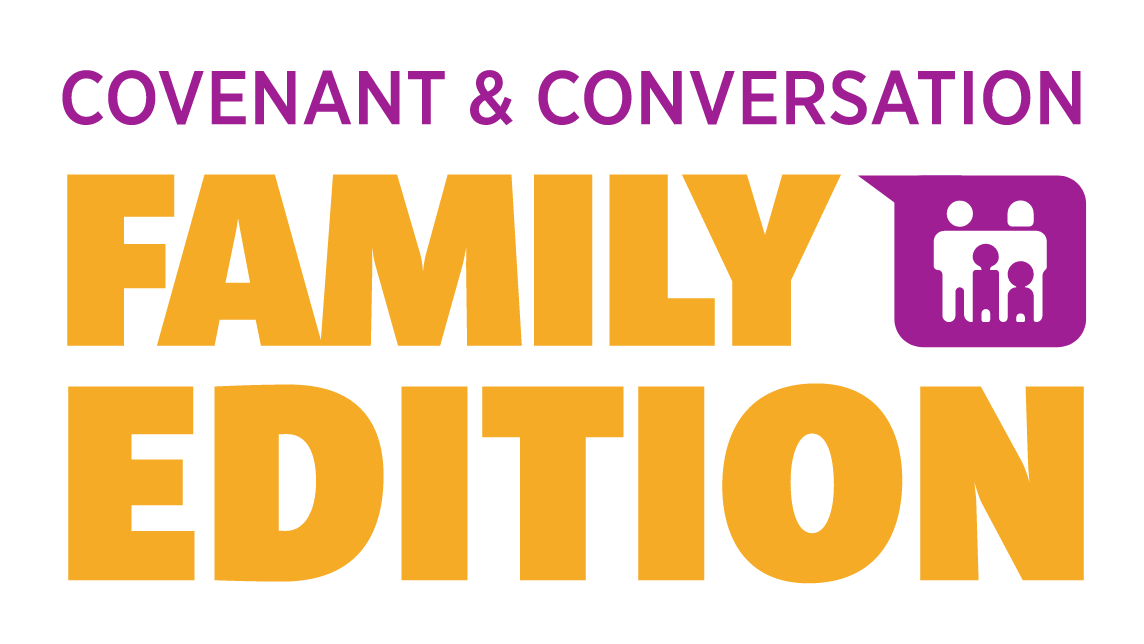

Bereishit
Inspired by the teachings of Rabbi Lord Jonathan Sacks
The Summary
This is an abridged version of the essay written by Rabbi Sacks in 2011, available here.
There is a deep question at the heart of Jewish faith. The Torah begins with God creating the universe day by day, bringing order out of chaos and forming wondrous diversity. At each stage God sees what He has made and declares it good. What then went wrong? How did evil enter the picture? The short answer is: humans. Of all the life forms thus far known to us, only we have freewill and moral responsibility. We have the ability to choose wisely and morally, but we often get it wrong.
It is our complex capacity to speak, think, and choose, that is at once our glory, our burden, and our shame. We are the one form of life capable of destroying the very order God made and declared good?
So why did God create us? That is the question posed by the Gemara, imagining a conversation between God and the angels:
When Hashem came to create man, He created a group of angels and asked them, “Should make humanity in our image?” They replied, “What will be their deeds?” So God showed them the future of humankind. The angels replied, “Let man not be created.” And God destroyed the angels. He created a second group, and asked them the same question, and they gave the same answer. God destroyed them.
He created a third group of angels, and they replied, “Hashem, the others told You not to create man, You did not listen. What then can we say but this: The universe is Yours. Do with it as You wish.” And God created man. But when it came to the generation who built the Flood and then the Tower of Bavel, the angels said to God, “Were not the first angels right? See the corruption of humans!” And God replied, “Even to old age I will not change, and even to grey hair, I will still be patient.”
The angels’ question is the ultimate one at the heart of faith. Why did God, knowing the risks and dangers, make a species that could and did rebel against Him, devastate the natural environment, hunt species to extinction, and oppress and kill his fellow man? The Talmud thus suggests a tension within the mind of God Himself.
The answer God gives the angels is extraordinary. He is saying, I, God, am prepared to wait. However many times humans disappoint Me, I will not change. However much evil they do in the world I will not despair. God created humanity because God has faith in humanity. We may fail many times, but each time we fail, God says: “I will still be patient. I will never give up on humanity. I will never lose faith. I will wait for as long as it takes for humans to learn not to oppress or use violence against other humans.” That, implies the Talmud, is the only conceivable explanation for why a good, wise, all-seeing and all-powerful God created such fallible, destructive creatures as us. God has patience. God has forgiveness. God has compassion. God has love.
For centuries, people have been looking at religion upside-down. The real phenomenon at its heart – the mystery and miracle – is not our faith in God. It is God’s faith in us.

Around the Shabbat Table
Questions to Ponder
- Think about a time when someone believed in you. How did that feel?
- How does the idea of God always believing in us affect how you think about your potential?
- Can you think of a character in Tanach who God showed faith in, even though they continued to make mistakes?

On the Parsha
Written by Sara Lamm
Inspired by the Teachings of Rabbi Lord Jonathan Sacks

The Parsha in a Nutshell
Bereishit is the opening act for our entire Torah. God creates the world in six days and places a man and a woman into the Garden of Eden to create, inspire, and enhance the world.
With total freedom in the garden, Adam and Chava have just one rule. Do not eat from the trees in the middle. But sadly, Adam and Chava both give in to temptation and eat the forbidden fruit. Cursed with a life of hard work, they are expelled from the garden.
Then the world’s first couple become parents to two sons, Kayin and Hevel. In a fit of jealousy, Kayin murders his brother. He is punished with a life of wandering, marked forever by his misdeeds.
The Parsha ends with a list of the subsequent ten generations of humankind.

Philosophy of Rabbi Sacks
Delving Deeper
The beginning of the Creation story presents a profound question: Why did God create humanity, knowing full well our capacity for both good and evil actions? Why did He even give us the ability to cause such chaos when He created us?
The answer lies in God’s unwavering faith in us. This idea invites us to reflect on our own potential for growth and the role of patience in this process. Just as God patiently waits for humanity to evolve, we, too, can cultivate patience and faith in ourselves and in others.
In our daily lives, we might encounter situations where it’s tempting to give up on someone – a struggling student, a difficult colleague, a flawed friend, or even ourselves. The best way to emulate God, to show that we are indeed created in His image, is to adopt God’s perspective, recognising that change often happens slowly and with a lot of ups and downs. When we are divinely patient with others, we open ourselves to the possibility of transformation and fulfilling our highest potential.

Parsha Activity
Let’s play “Balancing Acts”
Items needed: A long ruler and a paper towel (kitchen roll) or similar.
Balance the ruler on the roll to create a scale. Then, one by one, players must add lightweight objects to each side of the ruler. The object of the game is to maintain equilibrium, bearing in mind that this mirrors the delicate balance in God’s world. The game ends when the scale tips!

A Story for the Ages
The Trapeze
I grew up in the circus and I’ve lived there all my life. There’s a lot to learn if you want to be a member of our troupe, and everybody helps out everybody. I’ve set up and taken down the tents a thousand times. I’ve worked in the ticket office. And I’ve sold plenty of snacks to the audience members. But for me, the most magical thing that happened at the circus, the thing that taught me about hope, and bravery, and faith itself, was training as a trapeze artist.
As a small child I trained with my father, who then became both my teacher and my trapeze partner. Over time, I became famous for my acrobatics. I would swing and flip and somersault in the air to great applause, and then my father would catch me and swing me onto the next rung.
When everybody gasps and applauds, they’re showing how impressed they are by my flips. But the wonder they should pay attention to is not the acrobat spinning in the air, but the partner who makes the catch. My father had unparalleled skill and pin-point precise timing, and that’s the secret. He’s the one who made our trapeze act a success. For without my partner I would surely fall.
It’s a dangerous game of trust, swinging on the trapeze, but I learnt how to take giant leaps and hold the faith that someone would be always be there to catch me.
I’m older now, and I have a new partner - my daughter! And I am the one who catches her.

- What do you see as the link between the trapeze partners, and humanity’s relationship with Hashem?

On the Haftara
Written by Rabbi Barry Kleinberg
Inspired by the Teachings of Rabbi Lord Jonathan Sacks

An introduction to this new series
The Haftara Cycle
The aim of this new project is to explore the weekly Haftara through the lens of Rabbi Sacks’ writings and ideas. This series has been developed by a member of the first cohort of Sacks Scholars, Rabbi Barry Kleinberg.
Each week in this series will offer a brief overview of the book of the Prophets from which the Haftara is taken. We will then investigate the link between the Parsha and the Haftara.
Whilst Rabbi Sacks did not write a series specifically on the Haftarot, he did write the forewords to two volumes written on the Haftarot. A Haftara Companion by Julian G. Jacobs (1998) and The Haphtara Cycle by Stephen Gabriel Rosenberg (2000). In A Haftara Companion Rabbi Sacks wrote “The Torah is timeless; the prophets apply its message to our time.” He noted that “the prophets were among the earliest interpreters of Torah.”
In his foreword to The Haphtara Cycle, Rabbi Sacks quotes the first Mishna in Pirkei Avot (Ethics of the Fathers) “Moses received the Torah from Sinai and handed it on to Joshua, Joshua handed it on to the elders, the elders to the prophets, and the prophets handed it on to the men of the Great Assembly.”
He then goes on to say, “The institution of the haphtara between the Torah reading and the rabbinic homily (drasha) was therefore an expression of the unbroken sequence between Moses and the Sages of the Mishnah, whose connecting link was the prophets, the great public interpreters, and exponents of the Divine word.”
For Rabbi Sacks, the Haftarot represent two important things: one of the earliest examples of interpretation of the Bible; and a link in the unbroken chain from Sinai to us today!

Conversation Starters
- Have you studied the Haftarot before?
- If so, why? If not, why not?

Why Study the Haftarot?
Much has been written on the origin of the Haftara cycle. Both the cycle itself and its content have been debated by rabbis and scholars. However, it is clear that it is an ancient custom from the Rabbinic sources designed to highlight the connection between the Torah and the Prophets. Even after the revelation at Sinai, God’s word is still heard by the Jewish people.
Rabbi Sacks does not regularly mention the Haftarot in his essays on the weekly Parsha, but that does not mean that he ignores them. In this key passage from one of his essays on Tzav he writes “I believe that this fugue between Torah and Haftara, Priestly and Prophetic voices, is one of Judaism’s great glories. We hear both how to act and why. Without the how, action is lame; without the why, behaviour is blind. Combine Priestly detail and Prophetic vision and you have spiritual greatness.”
“I believe that this fugue between Torah and Haftara, Priestly and Prophetic voices, is one of Judaism’s great glories. We hear both how to act and why. Without the how, action is lame; without the why, behaviour is blind. Combine Priestly detail and Prophetic vision and you have spiritual greatness”.
'Left- and Right-Brain Judaism', Tzav, Covenant & Conversation: I Believe

A Summary of this week's Haftara
The Haftara in a Nutshell
Isaiah 42:5 – 43:11 (Ashkenazi)
Isaiah 42:5 – 42:21 (Sefardi)
The focus of the Haftara for Parshat Bereishit is on God’s chosen servants (the Jewish people) who are described as a light to the nations, bringing justice and hope.
The Haftara emphasises God’s power, creativity, and authority over all things. Despite Israel’s disobedience and idolatry, God promises redemption and restoration, emphasising His love and faithfulness.
The imagery of God as the Creator and Redeemer highlights His unique relationship with Israel and His ultimate plan for their salvation.
The Haftara deals with both a universal, and a particular message, taking an overview of the world and then zooming in on the Jewish People. This is a central theme we can find in the writings of Rabbi Sacks.
- Why do you think the Sefardi tradition is to finish the Haftara at 42:21?

Points to Ponder
- Have you ever begun to make something, and then left it for other people to complete?
- How did you feel about other people completing your work?
- How did it work out in the end?


Torah Connections
Parsha and Haftara Links
Both the Parsha and the Haftara deal with God as Creator and His withdrawal from His creations.
This apparent withdrawal gives humanity the space to be free and continue the act of creation.
As Rabbi Sacks noted, “When God made humanity in His image, He gave humans the freedom to choose, so that you can never fully predict what they will do. They too – within the limits of our finitude and mortality – will be what they choose to be.”
God creates the first man, Adam and then gives him the role of taking care of the new world. As Rabbi Sacks taught on so many occasions, “Good leaders create followers, but great leaders create leaders.”
The message running through both the Parsha and the Haftara is that God trusts humanity (even though, according to a Midrash in Sanhedrin, the angels did not!) and humanity must trust that God - even though He seems very far away - will always be there for us.

- Can you think of any other books of Tanach which deal with God’s absence?
- What is the message of God’s absence in these cases?

Putting the Prophets into Context
The Book of Isaiah
The prophet known as Isaiah (Yeshayahu in Hebrew), prophesied during the reigns of Uzziah (or Azariah), Yotam, Achaz, and Chezekiah, the kings of Judah, and Sefer Yeshayahu covers around fifteen years of this time period.
This sefer is filled with prophecies, warnings, and messages of hope, and it is divided into two main parts. The first focuses on Isaiah’s prophecies of coming judgment on Israel and other nations due to their sins. The second part contains messages of comfort and restoration. Yeshayahu often speaks of a future Mashiach who will bring salvation and establish a kingdom of peace.
Ultimately Yeshayahu’s messages emphasise the importance of faithfulness to God, social justice, and the ultimate sovereignty and mercy of God. These are important themes that we will return to over the course of the year.


Quote of the Week
“The relationship between God and the universe is creation: the work of God. Between God and humanity it is revelation: the word of God. When we apply revelation to creation, the word of God to the work of God, the result is redemption.”
Rabbi Sacks,
Future Tense

Further Ponderings
What Would You Do…
…if you were chosen to bring a group of people to an island, and lead them in creating a new society from scratch?

Written as an accompaniment to Rabbi Sacks’ weekly Covenant & Conversation essay, the Family Edition is aimed at connecting teenagers with his ideas and thoughts on the parsha.
With thanks to the Schimmel Family for their generous sponsorship of Covenant & Conversation, dedicated in loving memory of Harry (Chaim) Schimmel.
“I have loved the Torah of R’ Chaim Schimmel ever since I first encountered it. It strives to be not just about truth on the surface but also its connection to a deeper truth beneath. Together with Anna, his remarkable wife of 60 years, they built a life dedicated to love of family, community, and Torah. An extraordinary couple who have moved me beyond measure by the example of their lives.” — Rabbi Sacks








